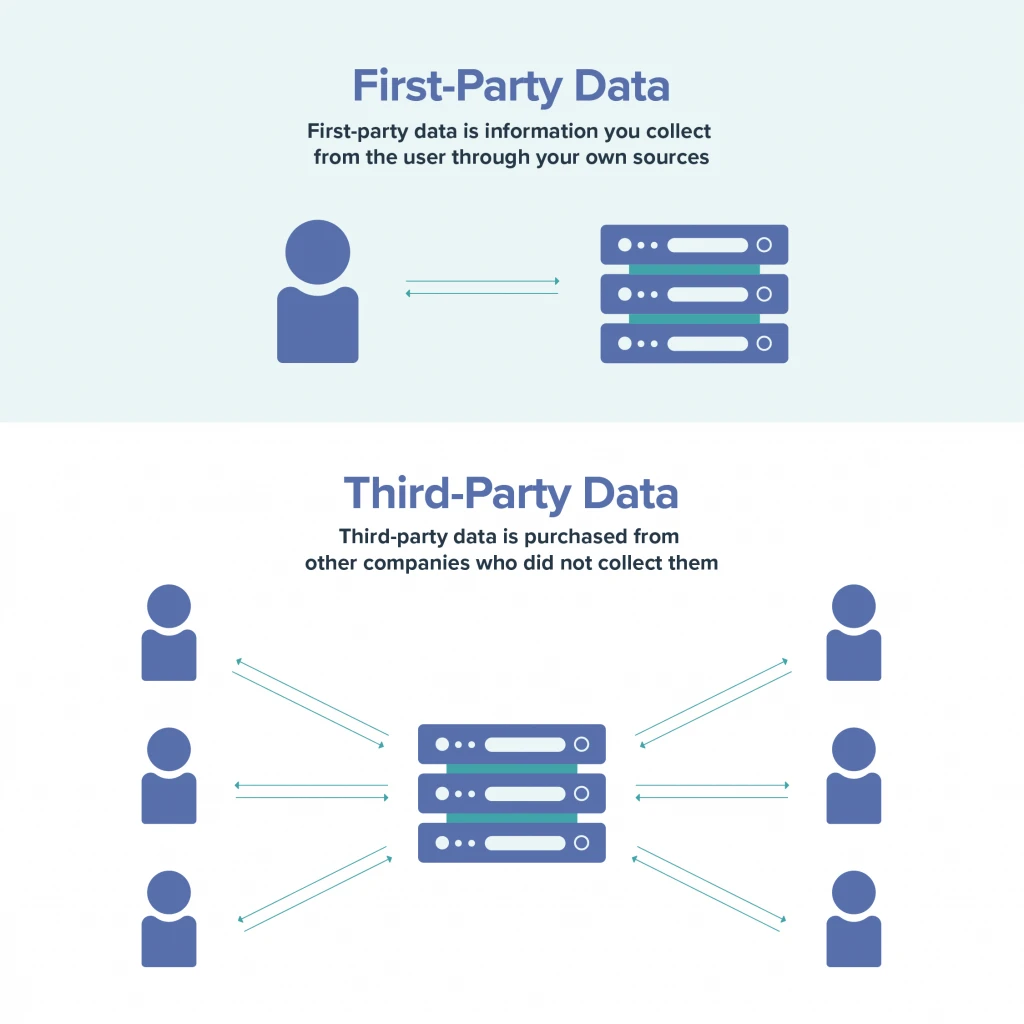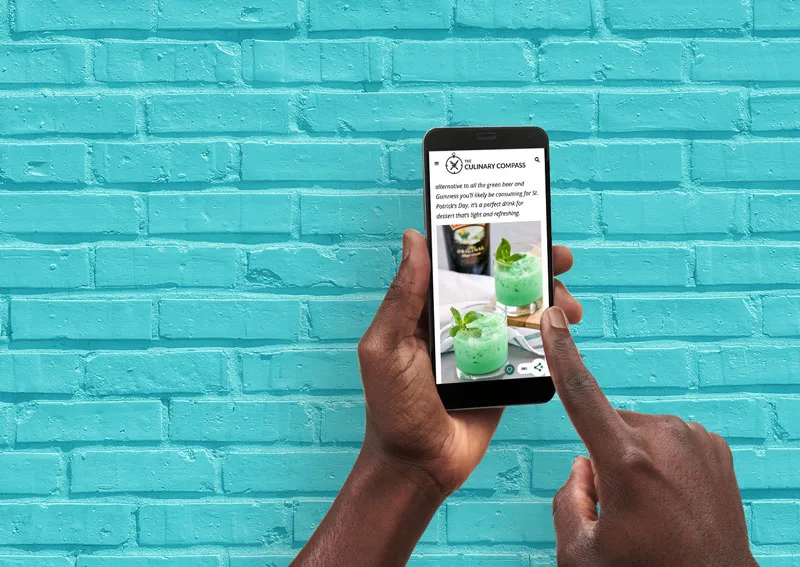Grow: First-Party Data and the Future of Advertising


Amid growing privacy concerns and the demise of the third-party cookie, the digital advertising world is being reshaped as we speak.
Earlier this year, Google announced it would join Safari, Firefox and other web browsers by phasing out third-party cookies and data tracking by late 2023.
We understand that this development was overshadowed by the craziness that is 2020, but it’s been on our minds at Mediavine — and should be on yours.
Why? Because this isn’t just in-the-weeds tech stuff. The way data is collected and ads are served online is about to be fundamentally altered.
Consider this: Google experimented and found that when third-party cookies disappear, approximately 60% of programmatic ad revenue will go with them.
Don’t believe Google’s prediction? Look at performance on Safari, right now.
With third-party cookies already a thing of the past, the revenue publishers earn from iOS traffic (where Safari is the dominant browser) is significantly lower.
Based on what we see when comparing Safari, without third-party cookies, to Google Chrome traffic now, that projected 60% drop is scarily realistic.
(Check out this post to learn what cookies are and why they matter in programmatic advertising.)
That kind of potential revenue loss is not something Mediavine (or Google) is taking lightly. The question becomes, what do we do about it?

There are two main schools of thought in terms of solutions.
Google is proposing a series of solutions under The Privacy Sandbox, including products with names you’ll hear a lot over the next couple of years, such as FLoC and FLEDGE.
The heart of this approach is the concept of moving data collection to the browser and out of third-party blackboxes.
In short, users (not publishers) will own their own data.
As Google Certified Publishing Partners, we’ll obviously be working closely with Google to implement their standards.
However, these ideas are just part of the solution. They won’t provide advertisers the same levels of targeting, and until Safari supports these same standards, they won’t get the buy-in of the entire ecosystem. Which leads us to Option B:
First-party data, or the ability for publishers to form a direct relationship with their readers and collect data themselves, has been touted as the solution for years.
It makes sense. Ultimately, it’s publishers who have relationships with their audiences. Who better to collect information and consent than the publishers themselves?
Essentially, the idea is that publishers have their users log in to their website and in the process, consent to being served personalized ads.
At that point, publishers can share users’ data with advertisers, providing the same (or better) targeting capabilities as with third-party cookies.
All while securing users’ privacy, and obtaining consent.
It’s unrealistic for any publisher to expect their entire audience to login. Even paywalls, or “freewalls” that are increasingly common on news sites don’t capture 100% of users.

The larger goal? Combining these two solutions
If publishers can entice some users to authenticate and provide first-party data, those users will become even more valuable than current programmatic users.
This is because there will be a limited supply of authenticated users when third-party cookies go away, forcing advertisers to pay more to reach their target audiences.
What about users who won’t login and authenticate, a.k.a. the majority of users?
That’s where the Privacy Sandbox comes in. Authenticated users will be the most valuable audiences and the Privacy Sandbox will help with guests.
Achieving this combination is how publishers will earn programmatic ad revenue at current, or even higher levels, in the coming years.
How do I, as a publisher, start this process?
Mediavine is already developing Grow, a product designed for publishers to collect first-party data and authenticate their users.
Grow is a series of user engagement tools and features designed for a common purpose: To deliver additional value to readers in exchange for those readers logging in and consenting to personalized ads.
Put another way, Grow will create a better user experience for the reader, in exchange for allowing you to authenticate them and maximize earning potential.
It will be transparent to readers, with a privacy-first approach.

If you’ve already installed Grow on your site, you’re witnessing the birth of this audience engagement framework.
Currently, we’re using an easy way for readers to sign in across the thousands of websites already running Grow: A single sign-on (SSO) allowing users to easily log in using their email, Google or Facebook accounts.
Once logged in, readers are able to favorite and share posts across these thousands of websites, and save them into a single, shared bookmark list.
We also provide a powerful, customizable search function, allowing readers to search your site along with any of their other favorites using Grow. This means readers can effectively start building their own personalized spot on the internet.
Those are the features Grow has now, in October 2020. But they’re just the beginning of where this product is going and what it’s capable of.
We think of Grow as a platform that encourages readers to consume more content while on your site, plus entices audiences to come back.
The next two major features on the roadmap are the ability for readers to “follow” their favorite publishers and to receive content recommendations, both via email and directly on their “favorited” websites.
Many publishers have asked this valid question. The reason, as we discussed at length in a previous article, is that newsletter sign-ups are not the same as first-party data.
However, we recognize how important they are to publishers, and we’re committed to finding ways for your loyal readers to opt-in to your newsletter through Grow.
As we said, this is just the beginning. The long-term, all-encompassing vision of Grow is allowing you, the publisher, to take back control of your audience.
With every user that signs in to your website and gives you consent to serve personalized ads, you’ll automatically make more money with Grow.
This is happening now. We’re partnered with identity pioneers like LiveRamp and Unified ID 2.0 to start sharing your first-party data with advertisers TODAY.
Looking at Safari, where third-party cookies are dead, you’ll already see an increase in your revenue with Grow on each user who authenticates.
The sooner you do this, the sooner you can start building an audience of logged-in readers, building up your percentage of authenticated users.
But you won’t just improve your iOS earnings today. When the third-party cookie crumbles for good in the next few years, you’ll be ready for the future.

Think of the power contained within the walled gardens of the big-name social networks, only this time, you’re inside the wall. Grow is a chance to change the game.
For the first time, tools and widgets you previously gave to other social networks — along with the rewards they generate — will be within your control.
Follow buttons that actually help you reach your own audience. Users who log in and actually help you make money, not faceless tech giants.
A social network by publishers, for publishers. A community built for content creators that actually rewards them.
Grow shares the same goals as Mediavine. To create sustainable businesses for content creators, and to make sure the web remains open and free.
We need your valuable feedback to develop the Grow features that will encourage readers to authenticate. Plus, as we mentioned above, opting in now gives you the opportunity to earn better from iOS users, as well as get a jumpstart on building that audience of authenticated users.
You can get started with the Grow open beta today, right in your Mediavine Dashboard.
If you have any questions, comments, or feedback on Grow, please email grow.me@mediavine.com.
Stay up to date with the latest from Mediavine
Welcome to the much-anticipated release of the fifth-annual edition of “The Best eCPM Days of the Year” calendar. Each year, we analyze historical trends to provide publishers with a graphical …
“Let’s talk about politics.” We know. This is a phrase absolutely no one wants to hear uttered around the dinner table or backyard barbecue these days. But hear us out. …
Ah, July. It’s a glorious month of sand-filled swimsuits, mosquito invasions, broken air conditioners and applying sunscreen only to look like cooked lobsters. It’s also the start of a new …